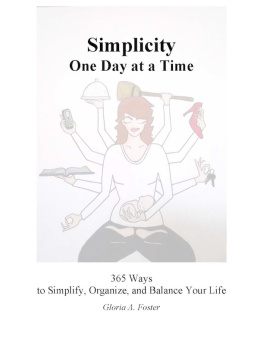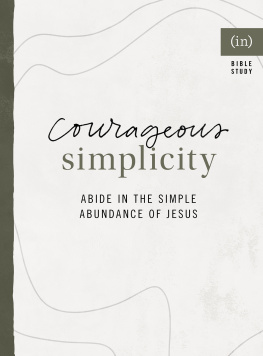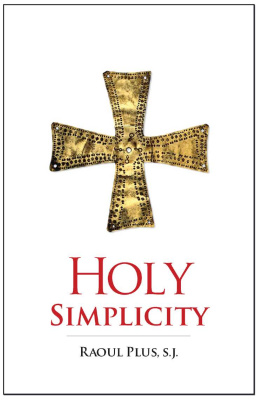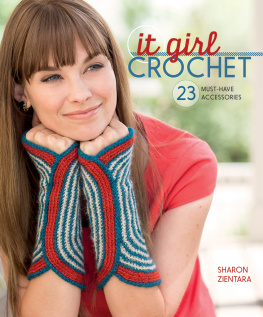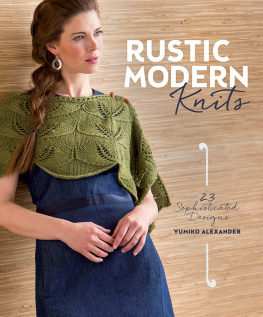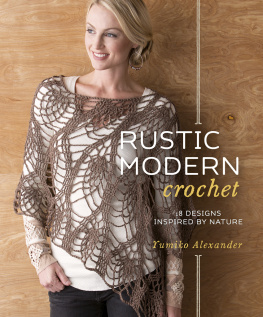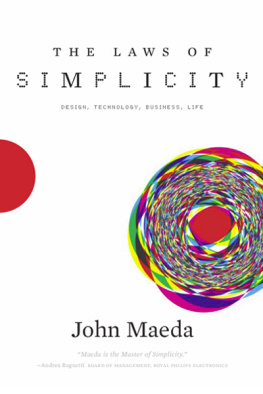Yumiko Sekine - Simplicity at Home
Here you can read online Yumiko Sekine - Simplicity at Home full text of the book (entire story) in english for free. Download pdf and epub, get meaning, cover and reviews about this ebook. year: 2020, publisher: Chronicle Books LLC, genre: Home and family. Description of the work, (preface) as well as reviews are available. Best literature library LitArk.com created for fans of good reading and offers a wide selection of genres:
Romance novel
Science fiction
Adventure
Detective
Science
History
Home and family
Prose
Art
Politics
Computer
Non-fiction
Religion
Business
Children
Humor
Choose a favorite category and find really read worthwhile books. Enjoy immersion in the world of imagination, feel the emotions of the characters or learn something new for yourself, make an fascinating discovery.

- Book:Simplicity at Home
- Author:
- Publisher:Chronicle Books LLC
- Genre:
- Year:2020
- Rating:4 / 5
- Favourites:Add to favourites
- Your mark:
- 80
- 1
- 2
- 3
- 4
- 5
Simplicity at Home: summary, description and annotation
We offer to read an annotation, description, summary or preface (depends on what the author of the book "Simplicity at Home" wrote himself). If you haven't found the necessary information about the book — write in the comments, we will try to find it.
Simplicity at Home — read online for free the complete book (whole text) full work
Below is the text of the book, divided by pages. System saving the place of the last page read, allows you to conveniently read the book "Simplicity at Home" online for free, without having to search again every time where you left off. Put a bookmark, and you can go to the page where you finished reading at any time.
Font size:
Interval:
Bookmark:
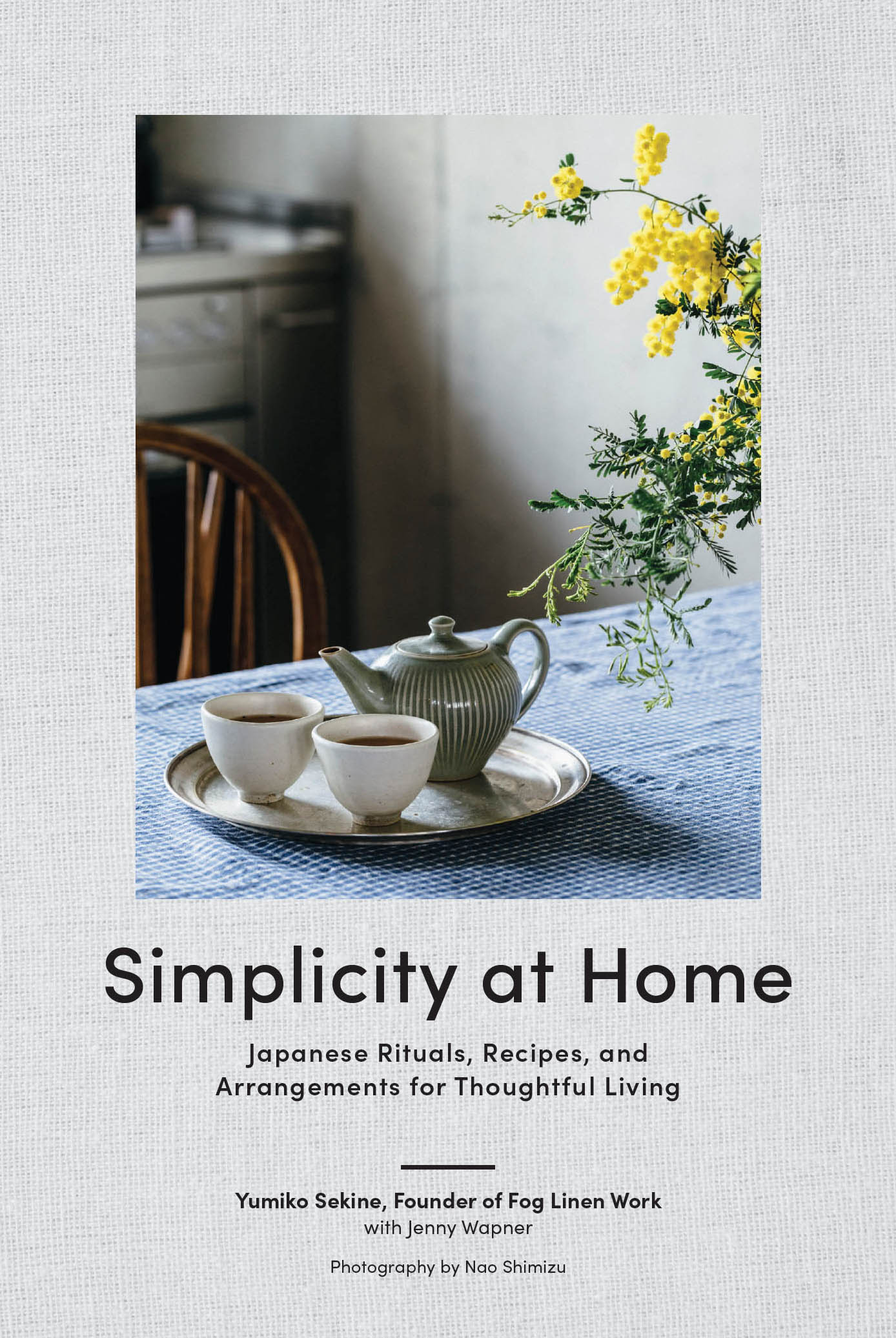


I dedicate this book to my familyGoban and Wataru.
And to a few of the people who have inspired me with their beautiful work: Sally and Mark Bailey, Lotta Jansdotter, Erica Tanov, Tricia Foley, and Sibella Court.
Copyright 2021 by Notebooks.ltd.
All rights reserved. No part of this book may be reproduced in any form without written permission from the publisher.
Library of Congress Cataloging-in-Publication Data available.
ISBN: 978-1-7972-0295-2 (hc)
ISBN: 978-1-7972-0327-0 (epub, mobi)
Design by Vanessa Dina.
Typesetting by Howie Severson.
Photographs by Nao Shimizu.
Chronicle books and gifts are available at special quantity discounts to corporations, professional associations, literacy programs, and other organizations. For details and discount information, please contact our premiums department at or at 1-800-759-0190.
Chronicle Books LLC
680 Second Street
San Francisco, California 94107
www.chroniclebooks.com


Several years ago, my friend Stephanie came to Tokyo from New York and stayed at our house for a few days. After her visit, she told me how different my life was from what she expected. When I asked her what she thought life would be like here in Japan, she said she pictured busy crosswalks crowded with people, noisy streets with huge billboards, and people living in small, cramped apartments packed full of stuff. Instead, what she found was a calm house, with just a few things, where life was simple and relaxed. I think many people share Stephanies expectations about Japanese life. Even though Japan has become such a popular tourist destination, I suspect there are still a lot of foreigners who dont know how Japanese people really live.
My lifestyle and aestheticsimple, minimal, a mix of Japanese and Western influencesis common here, but it may not be familiar to people outside of the country. Simplicity at Home is my chance to show you this modern Japanese style, and how you can adapt it to suit your own home and life.
As I write this, Ive just finished moving into a new house, one that my boyfriend, Wataru Ohashi, and I built ourselves. Ive spent a lot of time thinking about the best way to inhabit this new space, which has given me fresh eyes and a renewed desire to live richly with less, and to find more simplicity and ease in my life. I hope these lessons will be of value to you, and that in simplifying your home, you will find more clarity and joy in your life.
The combination of Japanese and Western influences in my life reflects my family history. I grew up in Morioka, a city in northern Japan known for its traditional crafts. My family ran a hospital there, and my maternal grandmother was one of its doctors, an unusual profession for a woman of her generation. In addition to seeing patients and running the hospital, she volunteered with the widows of World War II veterans. She created a workshop where they could make and sell scarves, hats, other clothing, and blankets. This workshop, called Michinoku Akane Kai, is still active today. The shop buys fleece so the women can spin and dye the yarn themselves, and then use that yarn for weaving and knitting. Ive worn their products since I was little and still use some of them now, forty years later. I even carry their products in my stores.

My grandmother traveled all over the world as a UNESCO ambassador and hosted foreign students and guests at her house. These visitors made a big impression on my mother, who developed a fascination with Western Europe and the United States. She loved the clothes, knickknacks, and food these visitors brought as gifts. As an adult, she emulated a Western style of decorating, and my childhood home had many decidedly un-Japanese features: wooden floors, a brick-walled kitchen, a fireplace, silver utensils, and Royal Copenhagen dishes. My mother carried on the family tradition of cultural exchange by hosting foreign visitors in our home throughout my childhood.
While my mothers family was strongly influenced by Western cultures, my paternal grandmother celebrated our homegrown customs. One of her greatest passions was teaching the formal Japanese tea ceremony. She had a dedicated room for it in her house and gave lessons to adults and children in our community. I took a few lessons when I was in high school, but sadly, I was not patient enough to learn this beautiful Japanese custom. I had my eyes on the West.
When I moved to Tokyo for college, I got a part-time job at a small gift shop and caf that resembled an English country cottage. One day, the owner pulled me aside to show me books by the American entertaining pioneer Lee Bailey. We cooked recipes from his books to serve in the caf, and sold dishes and linens in the gift shop similar to those pictured in his books. I loved those books and still have a copy of Lee Baileys Country Weekends (1983) in my kitchen.
When I was in my early twenties, I got a job working for a small bookstore that sold foreign books, mostly about decorating and cooking. It was my dream jobreading through the books and writing short book descriptions in Japanese. I spent my days immersed in books by Martha Stewart, Tricia Foley, and the British designers Tricia Guild and Terence Conran.
The bookstore was run by a group of successful businessmen who started the store as a passion project. Nevertheless, they could not ignore the fact that it was losing money. Without an improvement in sales, I would lose my job. I suggested that instead of selling new books, we could attract a more targeted audience by selling a carefully curated selection of used and rare books from around the world. The owners liked the idea but wouldnt pay me to travel abroad to find the books to sell. Instead, they offered me paid time off to take the trip and the promise that I could keep the profits from any sales.


After spending all of my savings on my first trip to New York, I came back with decorating and food magazines, childrens books, and lots of cookbooks. I still remember a few of the titles from that that first trip: Betty Crockers Picture Cook Book (1998), Miss B.s First Cookbook, by Peggy Hoffman (1950), and the Peter Pauper Press set of vintage cookbooks. I bought books that appealed to me personally and ones that I knew would seem special to customers in Tokyo. It only took me a week to sell through everything I had brought back. I made subsequent trips to Boston, Atlanta, San Francisco, Los Angeles, Portland, Santa Fe, Austin, Seattle, and Vancouver, and then on to Europe.
Next pageFont size:
Interval:
Bookmark:
Similar books «Simplicity at Home»
Look at similar books to Simplicity at Home. We have selected literature similar in name and meaning in the hope of providing readers with more options to find new, interesting, not yet read works.
Discussion, reviews of the book Simplicity at Home and just readers' own opinions. Leave your comments, write what you think about the work, its meaning or the main characters. Specify what exactly you liked and what you didn't like, and why you think so.


